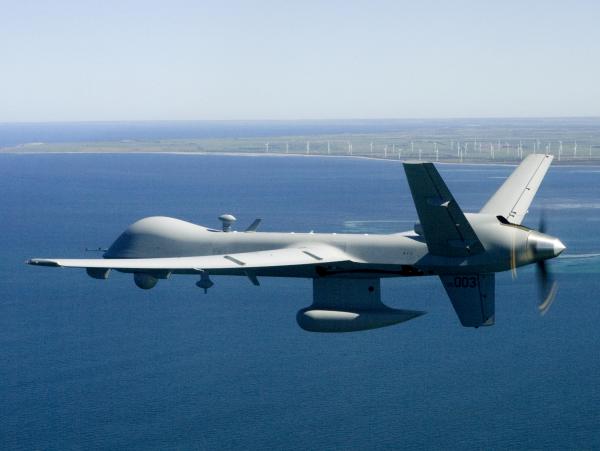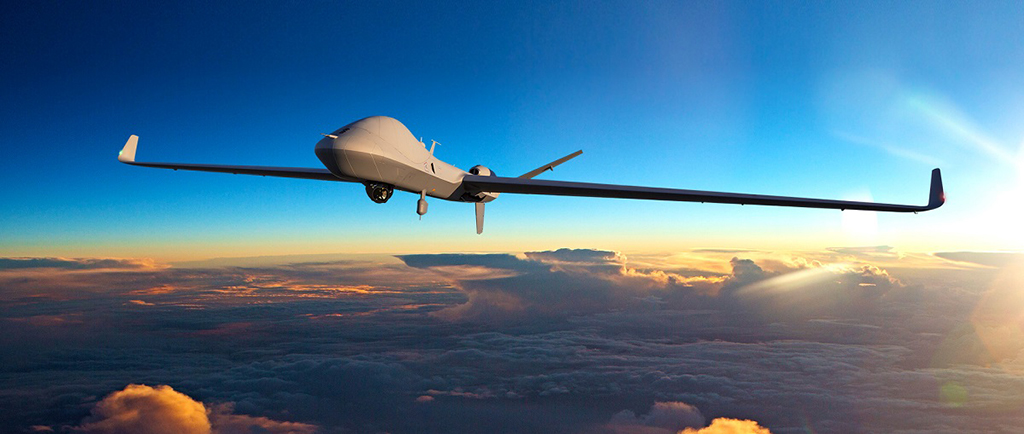
April 1st was a good news/bad news kind of day for U.S. military drone-maker General Atomics. First, it was reported that the government of Australia had revealed that they were canceling the planned purchase of 12 MQ-9B SkyGuardian drones, made by General Atomics (GA). Since the deal would have been worth a cool one billion dollars to GA, this was definitely the bad news.

Luckily, GA had a good news story in the works. And as luck would have it, it would run on the same day as the bad news story.

Back in January, the Federal Aviation Administration (FAA) handed GA $1.5 million to fly the 79-ft. 12,000 lbs SkyGuardian over North Dakota for 10 hours. (GA apparently didn’t feel the need for a press release and the resulting news article until the day before some bad news from down under was in the pipeline.)

The stated purpose of the FAA grant to GA was “to research Detect and Avoid (DAA) capabilities.” (DAA, the ability for an unmanned aircraft to ‘detect’ another aircraft, and ‘avoid’ it, is the Holy Grail of drone integration. “Integration” is the process of removing restrictions against drones operating in domestic U.S. airspace.)
That’s right—the FAA was PAYING a U.S. arms manufacturer $1.5 million in public monies to demonstrate their newest military surveillance drone over domestic U.S. territory.
If this is all a surprise to you, you’re not alone. The program to integrate military drones into U.S. domestic airspace has been operating for 10 years. It involves various federal agencies—DoD, FAA, NASA, Commerce, Energy, DHS, etc. But it hasn’t been reported on in any major news venue since the day before the bill creating it was signed into law in 2012 by then-President Barack Obama.

Of course, the military has been preparing to operate their drones in U.S. domestic airspace since long before that. Here, a U.S. Air Force officer briefs FAA officials on the plans to fly Reaper drones in-and-out of Hancock Field in Syracuse, all the way back in January of 2010.

And then, wouldn’t you know, when the FAA designated six drone integration test sites around the country in 2014 (supposedly after a rigorous competition), one of them was based in New York state. And that USAF officer from 2010 was put on staff to direct the very operation that he had described nine years earlier. Here’s a screengrab of his 2019 presentation on the operation (which has since disappeared from the NUAIR website.)

Less than a year after THAT “Success Story” of Reapers flying over populated areas of New York, one of them crashed upon takeoff at the Syracuse-Hancock Int. Airport. The drone with up to two tons of aviation fuel went down mere seconds from a densely-populated residential and commercial part of Syracuse. It took almost a year before the Air Force released that information to the public.

Why would they be so secretive about one of their drones nearly causing a catastrophe in a U.S. city? Maybe because it was the second Reaper crash in as many days. One had gone down somewhere in Africa just the day before, because of a maintenance problem GA had known about for months but hadn’t fixed.
More likely, it might have been because at the time, GA was trying to fly the Reaper’s big brother, the new MQ-9B SkyGuardian, over the City of San Diego, supposedly to demonstrate the commercial applications of large military-grade drones. Three weeks before the Syracuse crash, the Voice of San Diego had announced that they were suing the FAA and GA over the secrecy surrounding that attempt.

That proposed flight was eventually rejected by the professionals at FAA, but FAA leadership still fought tooth and nail in court to not reveal the reasons why. Whatever the reason, that rejection turns out to have been well-justified. GA was forced to take a consolation flight over the desert, and because the project was supported by NASA, they had to issue a report. That report clearly shows that the crucial DAA system (which Australia had said was the basis for choosing the MQ-9B), had failed repeatedly during the flight.

Don’t bother looking for that overview. Somehow, it never made it into the report…
With all that failure, General Atomics and the federal government are still moving ahead with plans to open U.S. domestic airspace to routine operation of military surveillance drones. In fact, GA is already previewing the opportunity (to commercial AND government customers) to lease their drones for surveillance flights in domestic or international airspace. They’re even considering a ““pay by the hour” scenario”.
The Leasing page on the General Atomics website ends with this odd signoff: “-ISR/24/7/365-”.
“Intelligence, Surveillance, Reconnaissance. 24 hours a day, 7 days a week, 365 days a year.” Over the United States… Coming soon?


CovertAction Magazine is made possible by subscriptions, orders and donations from readers like you.
Blow the Whistle on U.S. Imperialism
Click the whistle and donate
When you donate to CovertAction Magazine, you are supporting investigative journalism. Your contributions go directly to supporting the development, production, editing, and dissemination of the Magazine.
CovertAction Magazine does not receive corporate or government sponsorship. Yet, we hold a steadfast commitment to providing compensation for writers, editorial and technical support. Your support helps facilitate this compensation as well as increase the caliber of this work.
Please make a donation by clicking on the donate logo above and enter the amount and your credit or debit card information.
CovertAction Institute, Inc. (CAI) is a 501(c)(3) non-profit organization and your gift is tax-deductible for federal income purposes. CAI’s tax-exempt ID number is 87-2461683.
We sincerely thank you for your support.
Disclaimer: The contents of this article are the sole responsibility of the author(s). CovertAction Institute, Inc. (CAI), including its Board of Directors (BD), Editorial Board (EB), Advisory Board (AB), staff, volunteers and its projects (including CovertAction Magazine) are not responsible for any inaccurate or incorrect statement in this article. This article also does not necessarily represent the views the BD, the EB, the AB, staff, volunteers, or any members of its projects.
Differing viewpoints: CAM publishes articles with differing viewpoints in an effort to nurture vibrant debate and thoughtful critical analysis. Feel free to comment on the articles in the comment section and/or send your letters to the Editors, which we will publish in the Letters column.
Copyrighted Material: This web site may contain copyrighted material the use of which has not always been specifically authorized by the copyright owner. As a not-for-profit charitable organization incorporated in the State of New York, we are making such material available in an effort to advance the understanding of humanity’s problems and hopefully to help find solutions for those problems. We believe this constitutes a ‘fair use’ of any such copyrighted material as provided for in section 107 of the US Copyright Law. You can read more about ‘fair use’ and US Copyright Law at the Legal Information Institute of Cornell Law School.
Republishing: CovertAction Magazine (CAM) grants permission to cross-post CAM articles on not-for-profit community internet sites as long as the source is acknowledged together with a hyperlink to the original CovertAction Magazine article. Also, kindly let us know at info@CovertActionMagazine.com. For publication of CAM articles in print or other forms including commercial internet sites, contact: info@CovertActionMagazine.com.
By using this site, you agree to these terms above.
About the Author
Barry Summers, an activist living in North Carolina, has been researching military drone integration since 2014.
Barry can be reached at: bsum1@hotmail.com.









Crony corporatocratic capitalism at its most squalid. This is a job for John Taylor of Caroline.
[…] Barry Summers, published on CovertAction Magazine, May 17, […]
“Over grown military establishments are under any form of government inauspicious to liberty, and are to be regarded as particularly hostile to republican liberty.” George Washington